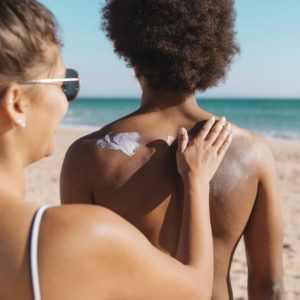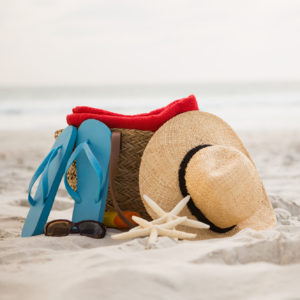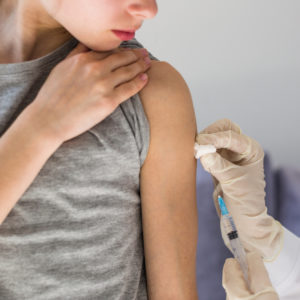Sunscreen Specifics


When it comes to the amount of sunscreen – you probably aren’t wearing enough. Products that contain zinc oxide and titanium oxide tend to be thicker, which can trick you into thinking you’re covered. The Skin Cancer Foundation recommends one ounce (think shot glass) of sunscreen applied every two hours.
Avoid sunscreen that contains oxybenzone, known to disrupt hormone balance, or vitamin A, which does not interact well with sunlight and may even trigger cancer-producing cells when exposed to the sun.
Don’t be misled by extreme SPF claims. The FDA says they “do not have adequate data demonstrating that products with SPF values higher than 50 provide additional protection.” Most experts agree – stick with an SPF between 30-50.
Spray-on sunscreens might be more efficient, but you run the risk of an uneven application resulting in sunburn. Plus, the airborne chemicals pose an inhalation risk to children and adults.
Don’t get burned by water-resistant claims. It’s best to reapply sunscreen after every swim!
And finally, it’s a misconception that sunscreen alone will prevent skin cancer. Wear a floppy hat to cover your face and buy a cute beach umbrella to sit under. You’ll thank yourself later!
What’s in Your Beach Bag?


Baby Powder – Don’t let sand irritate you or your crew. Rub baby powder over sand-covered skin and watch it fall right off!
Rash Guard items – If you have ocean-swimmers, this is a must! Look for rash guard apparel and topical application sticks that reduce friction.
Resealable sandwich bags – Not only can these plastic bags be used to collect shells, but they serve as a smartphone protector. Simply seal your phone in the bag – it will protect it from sand, water, and sunscreen – and will still be functional through the clear plastic!
Wet wipes – A day at the beach can be messy. Use wet wipes to clean sticky faces and hands.
Lip Balm Sunscreen – Don’t forget to protect your lips from damaging sun rays. Reapply often throughout the day.
Taking the OUCH out of shots


Provide a distraction such as playing with a new toy, singing a song, reciting ABCs, or blowing bubbles.
One study has shown that coughing once before and once during vaccination can reduce painful reactions. Tell your child to blow out imaginary candles on a birthday cake or take a colorful pinwheel for your child to blow on during the injection.
For babies, make sure you bring a pacifier. Studies have shown that pain is reduced when infants suck on a pacifier before, during, and after a shot.
The most important thing a parent can do to help ease the pain and stress of a shot is to stay calm. Long “pep- talks” meant to prep your child for their immunization is futile and will only lead to more stress as your child pleads his case with growing intensity. It’s best to team up with your pediatrician to keep the child calm and accomplish the task at hand.






